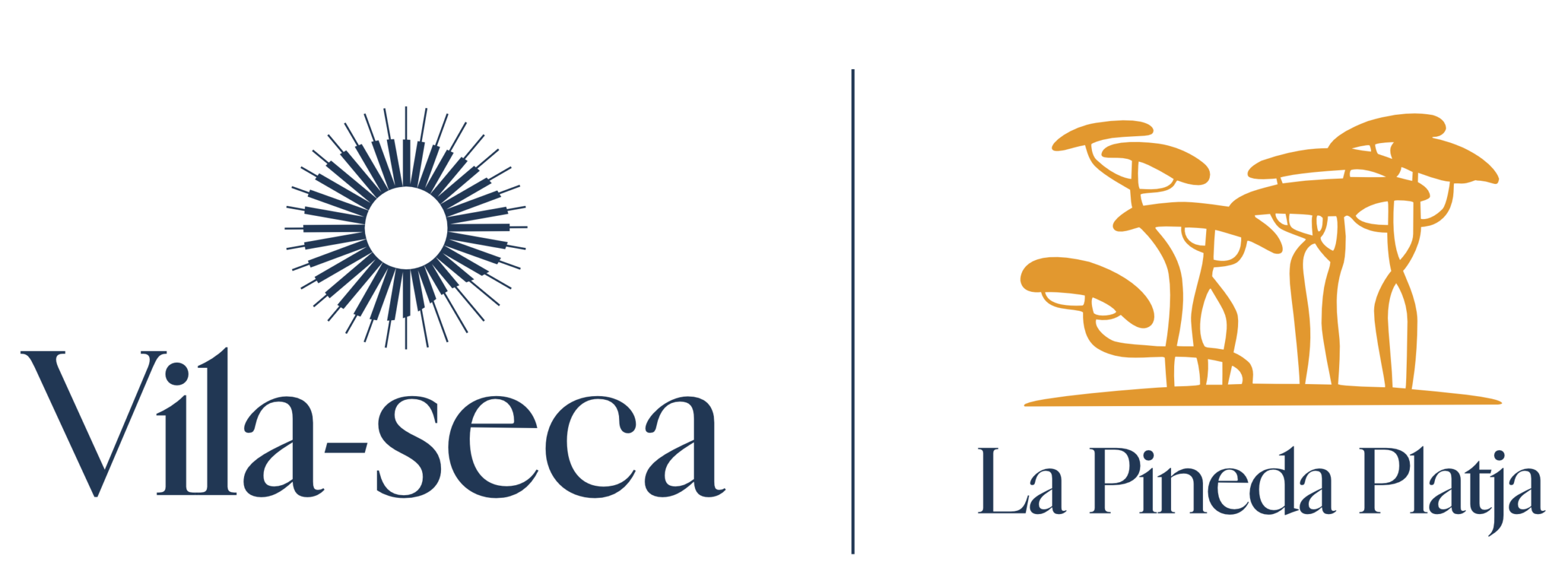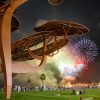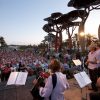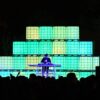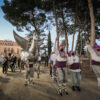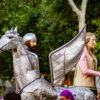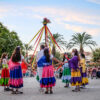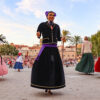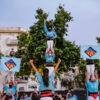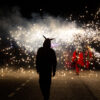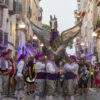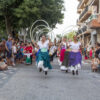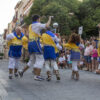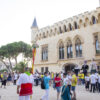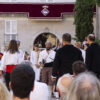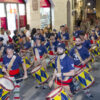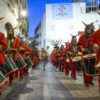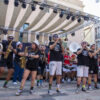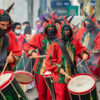Vila-seca and La Pineda Platja celebrate their Festa Major Estiu (Main Summer Festival) around 25 July (Sant Jaume) and 3 August (Discovery of the Body of Saint Steven). The municipality’s streets and squares fill with music, happiness and traditions in festivities where the idea is to get out of the house and onto the street to revel and have fun with friends and family.
The Sant Jaume Festival in La Pineda welcomes a large variety of acts for all ages, with special attention given to the littlest ones, where the large fireworks display is a highlight and visible all along La Pineda Platja. After the festival, townspeople and visitors move into Vila-seca where different events in honour of Saint Steven are organised and commemorated on 3 August. The family shows are an important part of the celebrations. And so are the more traditional shows and events, with their blend of culture, music and age-old traditions.
There are slews of cultural organisations in Vila-seca that all work hard and participate very actively in the town festival: Ball de Diables de Vila-seca (the Devils’ Dance of Vila-seca); Ball de Diables Infantil de Vila-seca (the Children’s Devil Dance of Vila-seca); the Cavall Alat de Vila-seca (Winged Horse of Vila-seca); the Cobla dels Ministrers del Comú (the Regional Minstrels ‘Cobla’ (large wind instrument band), the Colla Gegantera (group in charge of the town’s ‘giants’, huge puppets paraded through streets on people’s shoulders during festivals), featuring the giants Ton and Pineda Grove, Galceran de Pinós and Donzella and Tonet; the l’Esbart Dansaire Ramon d’Olzina (Ramon d’Olzina Dance Troupe), with its Ball de Bastons (traditional ritualistic weapons dance), Gitanes de Vila-seca (Gypsies of Vila-seca), Cercolets of Vila-seca (traditional dance) and the Valencians of Vila-seca; the Grallers (gralla, or shawm players); Trabucaires del Comú (blunderbuss fighters) and the Xiquets of Vila-seca.
In 2019, the ‘Winged Horse’ was added to the Festa Major d’Hivern (Main Winter Festival), a new feature with a big following among the townspeople. The structure, weighing in at 40 kilos and 1.7 metres tall, was conceptualised and built by Vila-seca sculptor and iron craftsman Antoni Mas.

